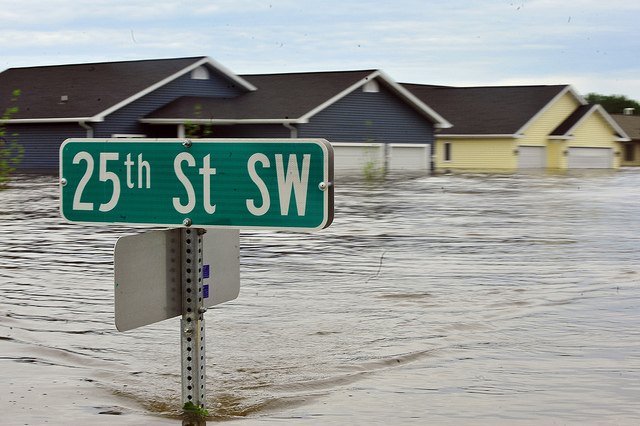Flood Abatement 101
 Flood damage can have devastating and fast-acting effects on the structure of a home. Time is of the essence; prompt response is critical to address damage and minimize the risk of future complications. Knowing what’s involved in flood abatement can also help you plan ahead if you live in a high-risk area or you’ve just received a flood warning.
Flood damage can have devastating and fast-acting effects on the structure of a home. Time is of the essence; prompt response is critical to address damage and minimize the risk of future complications. Knowing what’s involved in flood abatement can also help you plan ahead if you live in a high-risk area or you’ve just received a flood warning.
How Floodwater Damages a Home
As floodwater enters a home, it saturates a variety of materials, carrying moisture deep inside structural components. It’s not just water that penetrates; whatever is suspended in the floodwaters, including chemicals, salt, biological hazards, and silt, comes along for the ride. These can cause secondary problems that need to be considered along with the water damage.
Water damages materials in several ways. Strong storm surges and currents can displace structural components, rip away siding, and cause immediate physical damage. As the water penetrates it can also lead to warping, separation, and rot, as well as breakdown of materials like mortar and plaster. Once it settles, it becomes a breeding ground for mold, which is a health hazard in addition to a structural one. If the water also carries toxic chemicals or salt, the structural damage can be even worse, and water contaminated with sewage and other biohazards presents a serious health risk.
First Steps
The first step with flood abatement is to act fast, ideally within 24 hours after the floodwaters have receded. Before entering a home damaged by flooding, turn off gas and electricity supplies and have the home inspected by an expert such as an insurance representative, building inspector, first responder, or technician from a flood damage mitigation firm. The next step is removing as many porous materials (rugs, furniture, drapes, and mattresses) as possible. These may be cleaned and dried separately or discarded if they are too damaged to salvage.
Remove Water and Dry the Interior
With the house empty, a freshwater flush can be used if necessary to remove silt and other unwanted material. Then, the water needs to be extracted with vacuum systems to get as much of it out as possible. Once the home is reasonably dry, heaters and fans can be used to circulate air through the house to promote even drying deep inside the structure. (CAUTION: Verify that your electrical system is safe to use before plugging these appliances in.)
If you have to do it on your own, be aware that a surface can look dry while water is still contained underneath. Humidity sensors are available to help detect the amount of water in the atmosphere, and dehumidifiers can help pull water from the air to reduce moisture levels. You may need to cut out sections of walls, floors, or ceilings to remove damaged components and determine that the interior of the structure is dry; remember to use a stud finder to make sure you don’t cut into structural supports when you do this.
Repair and Reconstruction
After the house is totally dry, you can check the structure to determine what kinds of repairs may be needed. You may need to replace insulation and some structural components. Repainting and plastering may be required, and these must be conducted over totally dry surfaces, because any trapped moisture can contribute to the growth of mold which will be hard to eliminate when it is embedded under a layer of paint. Often drywall must be replaced.
In areas that are severely hit by hurricanes, concrete contractors have their work cut out for them. Specialized equipment is required for reconstruction and repair, especially with materials like brick and concrete, making it advisable to contact a flood abatement specialist for help with the process.
Document the Process
As you go through the flood abatement process, make sure to document with numerous photographs. These will be very important when you make an insurance claim to assist with the costs, or if you need to apply for emergency funds released by government agencies to help homeowners with flood damage. You may also find them useful in the event you sell your home; potential buyers may ask about past flooding history and request documentation on abatement procedures. Also keep copies of all your records including bills for materials, labor, and other costs associated with the mitigation, for example, receipts for temporary housing if your home is unsafe to inhabit during the restoration.
Mitigate Flood Damage Before It Happens
Take the following steps to mitigate flood damage before it happens:
- follow building best practices in your areas like elevating your home, if possible
- use coated and treated construction materials to resist water
- install a sump pump (with battery backup in case a storm knocks out your power) and inspect it regularly
- elevate major appliances at ground or basement level, such as the furnace, washer and dryer, etc.
- protect your foundation against water penetration with sandbags if you receive a flood warning
- transport porous materials to high ground when a flood warning is issued. If you have a two story home, for example, move furniture, rugs, and other soft furnishings upstairs for the duration of foul weather.
s.e. smith writes for Networx.com.
Updated July 18, 2018,
Looking for a Pro? Call us (866) 441-6648

Plumbing Average Costs
Plumbers Experiences

Contractor Found To Clean A Gas Fireplace After Days Of Searching

New Concrete Driveway Tough Enough For Farm Vehicles



